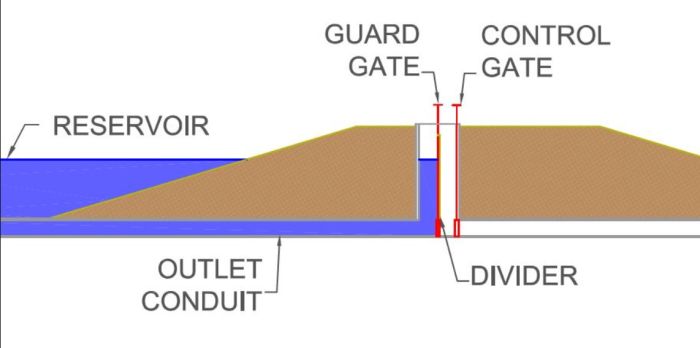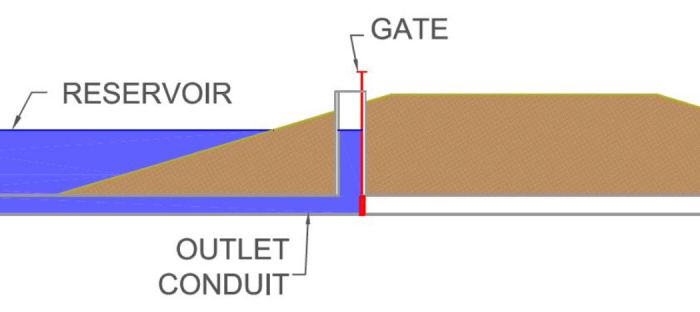Center Control: Difference between revisions
From ASDSO Dam Safety Toolbox
No edit summary |
No edit summary |
||
| Line 22: | Line 22: | ||
==Dual Chamber with Dual Slide Gates== | ==Dual Chamber with Dual Slide Gates== | ||
</br> | |||
Dual Chamber with Dual Slide Gate Configuration: | Dual Chamber with Dual Slide Gate Configuration: | ||
[[File:DualChamber.jpg|center|700px]] | [[File:DualChamber.jpg|center|700px]] | ||
| Line 38: | Line 38: | ||
==Single Chamber and Gate== | ==Single Chamber and Gate== | ||
</br> | |||
Single Chamber and Gate Configuration: | Single Chamber and Gate Configuration: | ||
[[File:SingleChamber.jpg|center|700px]] | [[File:SingleChamber.jpg|center|700px]] | ||
Latest revision as of 19:43, 24 June 2022
Dams that control outflow using a slide gate or flashboards in the center of the dam are good for remote locations because they are difficult to misoperate. Typically, dams with center control are small, low head dams.
Dual Chamber with Spillway Splitter Wall
Pros:
- Great for remote locations
- "Spilled" water is conserved (in delivery system)
- Less expensive than systems with gate & gate operators
- Difficult to misoperate
Cons:
- Cannot make low level releases unless all flashboards are removed
- Only reasonable for small, low head dams
- Potential for leakage along internal weir divider or around joints (if precase tower sections are used)
Examples
Dual Chamber with Dual Slide Gates
Dual Chamber with Dual Slide Gate Configuration:

Pros:
- Easy access to gate for operation
- Gate stems are protected from ice
- Guard gate allows work to be done on operating gate or downstream conduit without draining the reservoir
Cons:
- Venting required
Examples
Single Chamber and Gate
Single Chamber and Gate Configuration:

Pros:
- Easy access to gate for operation
- Straightforward hydraulics
Cons:
- Venting required
- Spilled water may be lost
- Need to construct auxiliary earthen spillway - can be expensive, high maintenance
Examples
Revision ID: 1503
Revision Date: 06/24/2022


